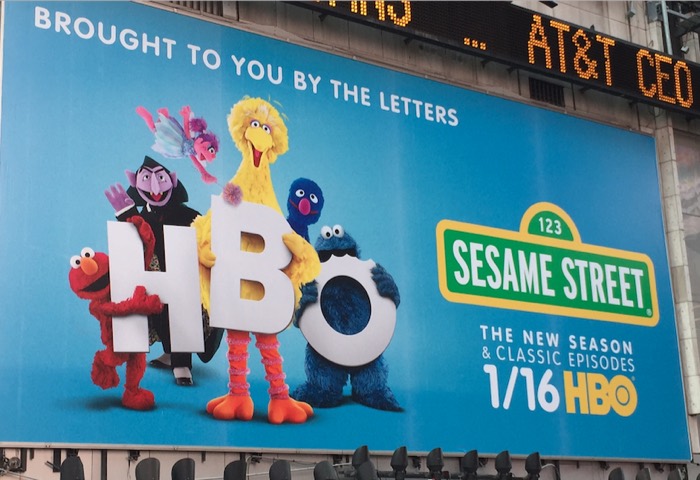-
HBO Now Reports 800K Subscribers As Marketing Lags
On yesterday’s Time Warner Q4 ’15 earnings call, HBO CEO Richard Plepler said that HBO Now as at “about 800,000 paying subscribers.” It was the first specific subscriber number the company has shared since launching in April, 2015. While Plepler positioned the 800K as significant, no surprise, given HBO Now’s expectations, there’s been much debate about whether the 800K is in fact, disappointing.
I’ve been bullish on HBO Now’s opportunity since its launch, but I think there are a number of things that held things back during the launch year. Most significant is lack of marketing and promotion. HBO Now came out of the gate strong, launching with Apple TV and establishing a presence both online and offline. In those first few months it was hard to miss an ad for HBO Now.But now it feels like it’s been ages since I’ve seen an ad for HBO Now (and I’m always on the lookout for ads for it and other SVOD providers). Recently I was in Times Square and there were massive billboards for Netflix, Amazon, Hulu and T-Mobile Binge On. There was a massive HBO billboard too, but it was promoting Sesame Street content, not HBO Now.

Of course, I don’t know HBO’s exact marketing spend on HBO Now, but I’d wager it was lower in Q4 ’15 than it was in Q2 or Q3. In the noisy, competitive SVOD market, heavy marketing is paramount and HBO Now is not getting the promotion it needs.
I think part of the reason HBO Now was under-marketed is because HBO management is trying to walk a fine line of trying to target broadband-only subscribers vs. the 70-80 million pay-TV households that don’t subscribe to HBO currently. This has been a theme from day one of HBO Now’s launch, albeit sometimes murkily articulated. HBO would dearly love to get cable operators who are also the biggest broadband ISPs to promote HBO Now. A big, sustained HBO Now marketing campaign would make already cautious cable operators even more recalcitrant.
As if that wasn’t all enough, HBO Now’s $14.99/mo price point is well above Netflix’s, Hulu’s and of course Amazon Prime’s where video is bundled with shipping. HBO Now is priced to skim, rather then deeply penetrate, the market. As well, HBO Now is not yet available on Xbox and PlayStation, which Plepler said together account for 20% of HBO’s HBO Go TV Everywhere service.
The final piece of the puzzle that can’t be forgotten is that this is brand-new terrain for HBO. While the company has always done brand marketing, and provided marketing support to its distribution partners, this is the first time the company has done direct consumer marketing with the specific goal of conversion.
That’s a very different skill set, and is heavily dependent on mastering online targeting. In addition to allocating significant budget, it simply takes time to develop and refine these direct marketing skills. In Q2-Q4 ’15, Netflix added 3.34 million domestic subscribers, more than 4x HBO Now’s gain. But Netflix also probably spent a multiple of what HBO did on marketing and has had years to refine its tactics.
One other way to think about the 800K is that it represents nearly 30% of HBO’s total net domestic subscriber additions. So without HBO Now’s 800K, domestic additions would have been just 1.9 million, down from almost 3 million in 2014. Plepler has asserted many times that HBO Now isn’t cannibalizing the pay-TV ecosystem, but looking at the 2015 numbers, one wonders how many of those 800K HBO Now adds may have been siphoned away from the traditional pay-TV model. Regardless, without the HBO Now subscribers, HBO’s growth would have been less than stellar.
Stepping back, I still believe it’s relatively early days for HBO Now. As explained above, there are a lot of reasons why HBO Now’s marketing likely wasn’t max’d out. On the earnings call, HBO highlighted new shows like Bill Simmons, Jon Stewart, Vice, the new Game of Thrones season, etc. that will all bolster HBO Now’s appeal. And Plepler talked about marketing being much more aggressive in 2016. As all of this happens, there’s still ample reason to be bullish on HBO Now’s potential.Categories: Cable Networks
Topics: HBO Now


